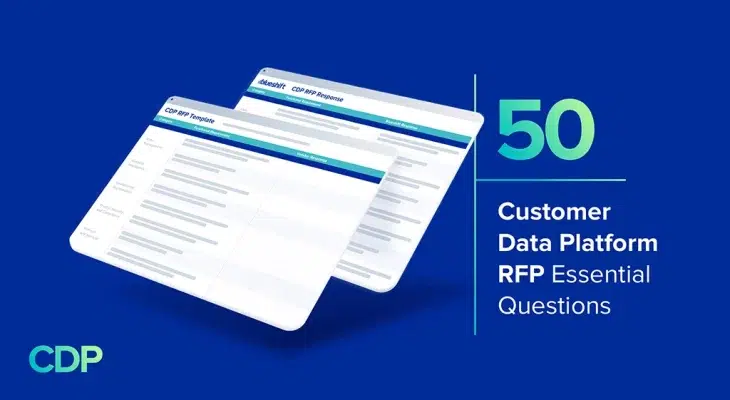Key Customer Data Platform Requirements to Include In an RFP
The Customer Data Platform Institute defines the CDP as a “packaged software that creates a persistent, unified customer database that is accessible to other systems.” But for a CDP to help marketers not only centralize their data but to also use it to deliver relevant, personalized customer experiences across every interaction it needs a specific set of capabilities. Our Customer Data Platform RFP template was specially designed for B2C companies looking to accelerate their business through customer-centric experiences. The questions in the template are suitable for any industry, vertical, and company size — and will point you to the best vendor for your needs.
The core requirements on which to evaluate the CDPs on your list, fall into 5 categories:
Data Management: This is the bread and butter of most CDPs, and is at the core of everything they do. Within Data Management you should evaluate vendors on their Data Ingestion, Profile Unification, and Data Access capabilities. A solid CDP should be able to ingest data in real-time from any offline or online source, centralize the data and resolve identities into a Single Customer View, and make unified data immediately accessible and actionable across your enterprise and your channels — all without the need for dedicated IT/engineering involvement.
Analytics and Intelligence: The ability to apply AI and intelligent analytics to your data will set apart simple data management solutions from marketer-centric CDPs. A solid CDP will include robust Segmentation, AI/Predictive Intelligence, Recommendations, and Analytics & Reporting capabilities that are accessible and customizable by marketers themselves in an intuitive, visual interfaces.
Omnichannel Orchestration: For a CDP to impact the full customer experience, it needs to be a hub that orchestrates channels and applications around customer data, insights, and behaviors. Key capabilities to evaluate include Omnichannel Journey Orchestration, Personalization, Triggered Workflows, and Integrations. Look for a platform that’s dynamic, adaptive, and can truly connect the full customer experience.
Privacy, Security, and Compliance: Because CDPs handle first-party customer data, they must meet stringent privacy and security requirements. This will only become more important as data and privacy expectations (and regulations) grow. Evaluate how the CDPs on your list support data privacy preferences and adherence to privacy compliance regulations. Understand how they manage PII in accordance with regional privacy and security regulations. And ensure they have the appropriate controls and audits in place.
Platform and Services: Lastly, look for a solution that meets not only today’s needs but that can grow with your business A great CDP will be flexible, reliable, scalable, and extensible. Also, ensure that the CDP provides the appropriate level of support to help you realize fast time to value and ongoing success, including dedicated onboarding and customer success resources.
Beyond just ticking capabilities off a checklist, you should also invest time into truly getting to know your vendors — platforms are only as strong as the people who make them. It’s important to look for a true technology partner that’s flexible, transparent, and always on call to brainstorm, troubleshoot, and advise.
If you’d like to learn more about Blueshift’s offering, the SmartHub CDP, and how it stacks up against the competition, reach out to one of our experts for a 1 on 1 demo, today and download our complete CDP RFP Template.



